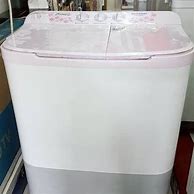
Cách chuyển từ Độ C sang Kelvin
1 Độ C tương đương với 274,15 Kelvins:
Ví dụ, nếu số Độ C là (700), thì số Kelvin sẽ tương đương với (973,15). Công thức: 700 °C = 700 + 273.15 K = 973,15 K
About the Celsius scale
Celsius is a unit of temperature also known as centigrade. It is named after the Swedish astronomer Anders Celsius who created the scale in 1742. The Celsius scale is the most commonly used temperature scale worldwide despite not being widespread in the US.
Celsius divides the range between the freezing and boiling points of water into 100 equal degrees. The freezing point of water is 0 degrees Celsius (0°C) and the boiling point of water is 100 degrees Celsius (100°C). This makes it convenient for measuring everyday temperatures.
Celsius is normally used in weather forecasts (apart from in the US), science and general temperature measurements. It provides a simple way to express temperature with positive values indicating temperatures above freezing and negative values for temperatures below freezing.
Why convert from Celsius to Kelvin?
Celsius is commonly used for everyday measurements whereas Kelvin is preferred for scientific calculations- the scales are essentially the same but start in a different place. The Kelvin scale is an absolute temperature scale that starts at absolute zero.
One of the reasons that you might want to convert from Celsius to Kelvin is to get rid of negative values. In the Celsius scale zero degrees represents the freezing point of water so everything below this has a negative value which can make certain calculations tricky. By converting to Kelvin you eliminate all negative values (as you cannot have a negative Kelvin temperature) which can make calculations easier.
Also, Kelvin is used extensively in science equations such as the ideal gas law and thermodynamics. Equations on this subject involve temperature differences or ratios and using Kelvin ensures that the calculations are consistent
Converting from Celsius to Kelvin
Celsius to Kelvin conversions are easy as the degree interval between both scales are identical. To convert Celsius to Kelvin simply add 273.15 to the value.
For example, if you had a temperature of 25 degrees Celsius, add 273.15 to this as follows: 25 + 273.15 = 298.15K.
For every change of a degree Celsius, it is equivalent to a change of one degree in Kelvin.
What happens at absolute zero (0K)?
At absolute zero, 0 Kelvin (0K) or -273.15 degrees Celsius, the temperature is at the lowest possible point anything can possibly be. At this temperature the kinetic energy of atoms and molecules is zero causing them to come to a complete standstill. All molecular motion ceases and matter becomes still.
Several amazing phenomena occur here. As there is no molecular motion there is no heat energy and this has significant implications for the physical properties of the substance. For example, materials become very brittle and their electrical resistance becomes zero. Gases and liquids freeze into solids.
Scientists have never cooled anything down to absolute zero. However they have been able to see the effects of approaching absolute zero. This has provided insights into the behavior of matter and have led to the understanding of superconductors and Bose-Einstein condensates.
About the Kelvin scale
Kelvin is based on Celsius but with a different starting point. It is an absolute scale meaning that it starts at absolute zero; the point at which all molecular motion ceases. The Celsius scale starts at the freezing point of water.
Each increment of the Kelvin scale is the same as a Celsius degree. The difference is the zero point; on the Kelvin scale is absolute zero which is equivalent to -273.15 degrees Celsius. This means that the Kelvin scale doesn't have negative values as all temperatures are measured relative to absolute zero.
The Kelvin scale is almost exclusively used in science such as physics and chemistry.



